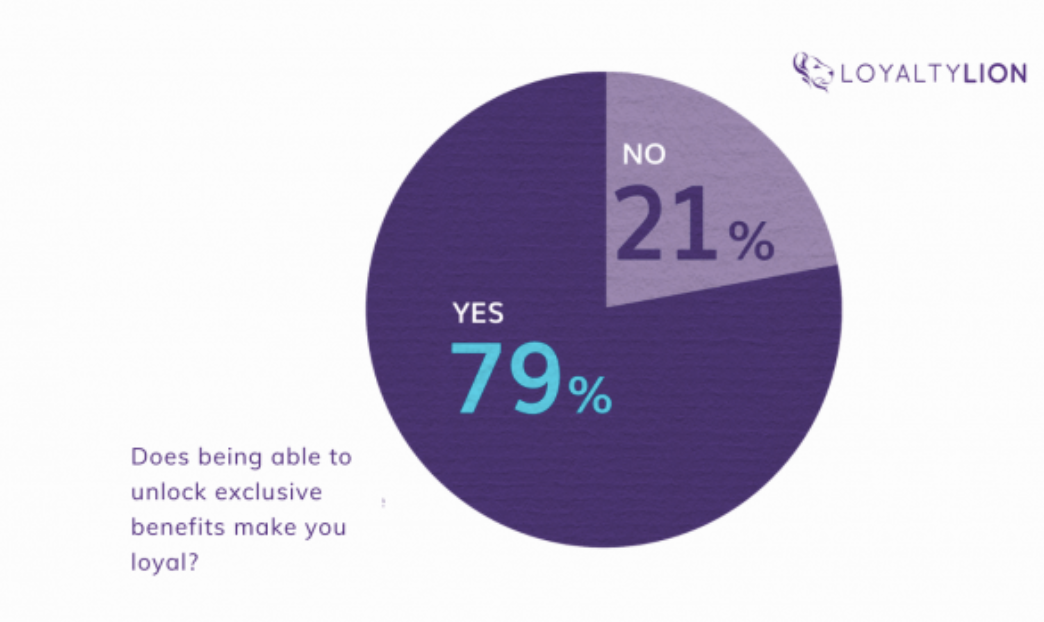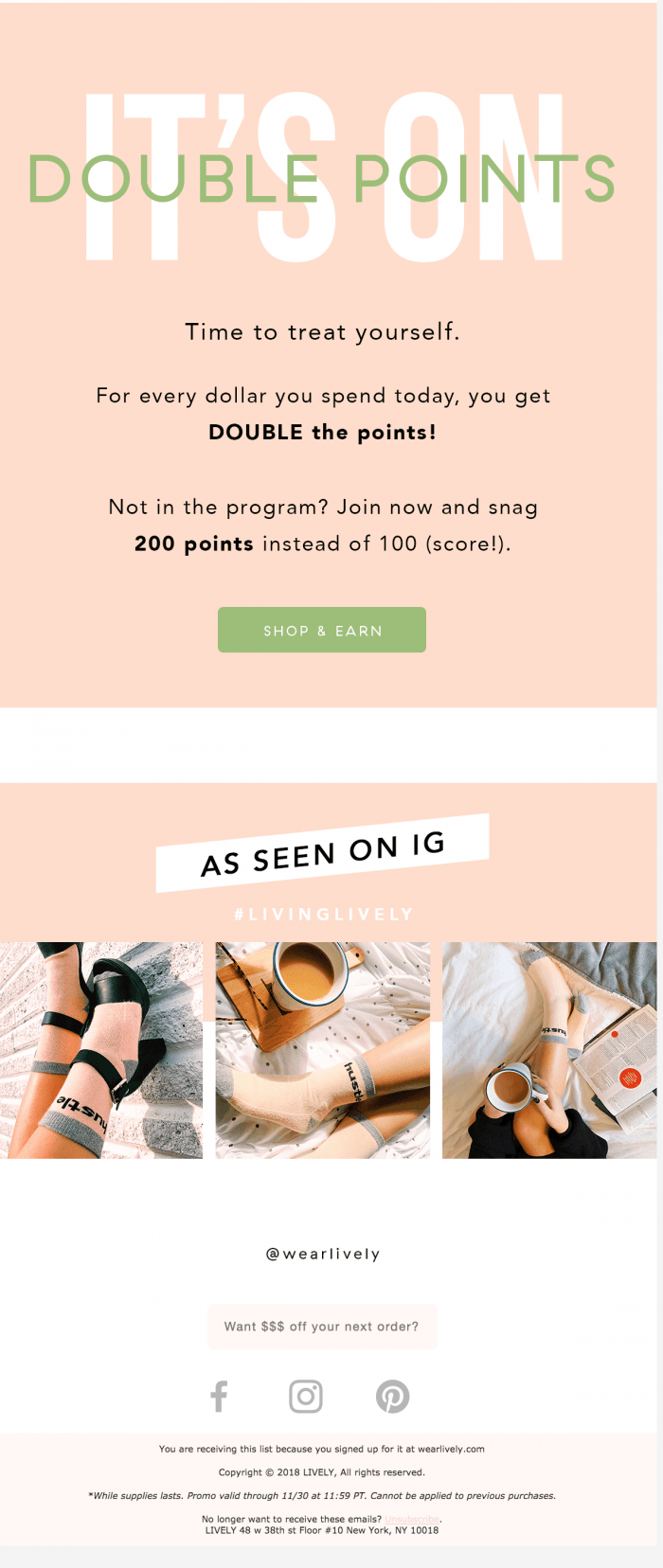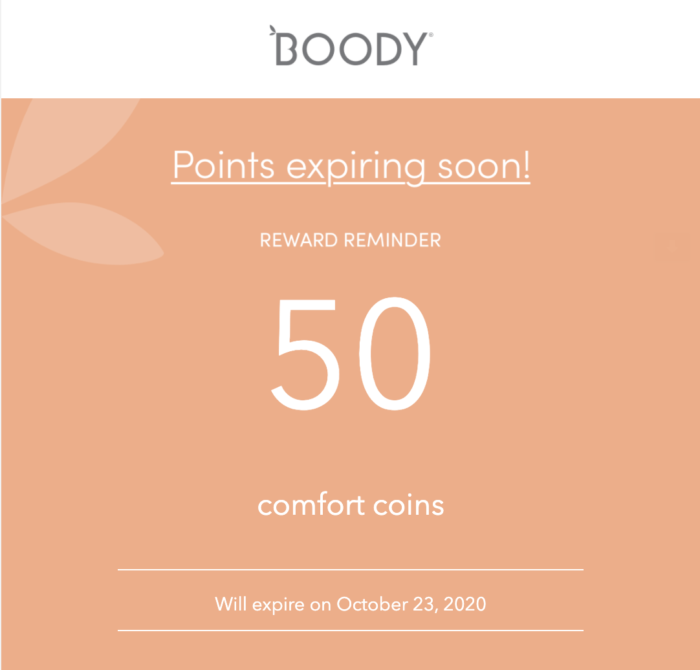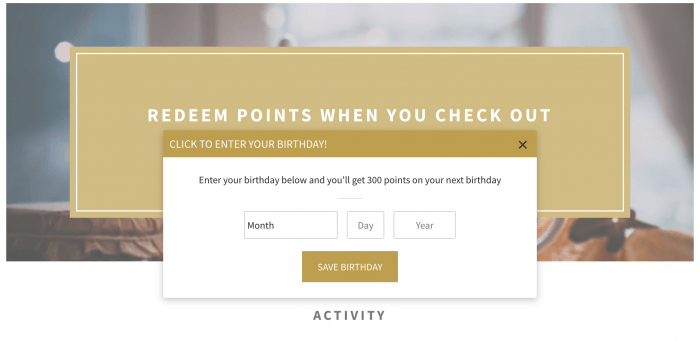Today, with the increasing number of touchpoints involved in building customer relationships, relationship marketing is more alive than ever.
Similar to any relationship (even romantic ones), relationship marketing states that human relationships are built on mutual benefit and trust. In other words, you need to create long-lasting relationships and give your customers significant benefits that make them feel important to your brand.
So, instead of having short-term goals that cost you more, focus on building long-term goals that will retain your existing customers, drive loyalty, and increase your revenue.
With only 49% of online shoppers feeling emotionally connected with the brands they shop with online, it can be challenging for merchants to create one-to-one connections without face-to-face interactions.
This is where loyalty programs come in as the game-changer. They’re based on the principles of relationship marketing and will help you create lasting long-term connections.
How your brand benefits from relationship marketing
Higher customer lifetime value (CLV) and retention:
By communicating with your customers and bringing them value, you make them feel like they’re a part of something special – a community. In return, these customers will be happy to keep buying more of your products.
Customer retention is a critical metric for ecommerce businesses. It’s a key measure of customer satisfaction because it shows how well a company keeps its customers over time. There are many reasons why a customer might leave a company, such as bad customer service, low-quality products, or just a better deal somewhere else. The customer relationship marketing strategy aims to help merchants retain their customers by building strong relationships that keep them returning.
Higher-performing loyalty programs:
There are many ways to set up a customer loyalty program, but most of them have some things in common, like giving customers rewards they like. These can be points they can use to get discounts or free stuff, special access to sales or events, or personalized service.
The key is to make a program that fits your business and your customers’ needs. For a customer loyalty program to work, it needs to be well-made and well-publicized. Businesses should also ensure it fits the needs of the people most likely to buy from them.
Better cross-selling and upselling opportunities:
Consider how Amazon recommends products to its customers. Chances are, they likely visit the site to purchase a handful of products, but their cart ends up with more products than expected. Why does this happen?
It’s because Amazon has invested in its relationship marketing strategy. Their returns policies are consumer-friendly, shipping is fast, and products are generally high quality. Customers are more likely to purchase additional products because they feel that Amazon can be trusted.
Lower customer acquisition costs (CAC):
It can cost a lot to market to new customers and win them over. Relationship marketing, on the other hand, can be a very cost-effective way to keep customers you already have.
Marketing Return on Investment (ROI) can be a great way to measure your success. With a higher customer retention rate, the cost of getting new customers decreases. This gives you more money to build and use your relationship marketing strategy.
How to create a relationship marketing strategy
Creating a relationship marketing strategy doesn’t have to be complicated. For any brand looking to improve their relationship marketing, here’s what they need to do.
Focus on connecting with customers
Deliver an amazing customer experience:
You should relentlessly focus on making sure your customers feel valued. Every step of the customer journey must focus on making purchases easy.
Listen to their feedback:
One of the best ways to use relationship marketing is to respond to customer feedback quickly. Whether it’s a good review or a complaint, merchants must show that they are listening to their customers and taking steps to improve their service.
Customers are more likely to stay loyal to a company and keep doing business with them if they feel heard and valued. On the other hand, people who feel ignored or unimportant are more likely to go elsewhere. Because of this, merchants need a way to respond quickly to customer feedback. It shows how much they want to give their customers the best experience possible.
Get your community involved
Engage on social media:
Do you know why brands are so “funny” on social media these days? To keep a relationship healthy, it’s important to talk to customers. There are many ways to stay in touch with your clients. Social media sites like Facebook, TikTok, Twitter, and Instagram are great for telling people about your latest news and deals. You can also keep people informed by sending them emails or text messages.
Use referral programs:
If a customer loves your brand, they’ll let their friends know about it. Referrals can help word-of-mouth marketing by giving customers a reason to tell their friends and family about your brand. For example, you can offer a discount for every customer referral and a bonus for new customers who come from referrals. Make them as interesting as possible to get the most out of this strategy.
Offer unique benefits to your customers:
Even in today’s world of online shopping and faceless interactions, it’s still possible to make customers feel appreciated. Your brand should work on offering unique rewards to your customers. For example, your most loyal customers can get access to early drops of new products. Churned customers can be invited to your loyalty program showing how they’ll benefit from repeat purchases.
How to incorporate relationship marketing into your store with a loyalty program
First, let’s look at the concept of relationship marketing in more detail to understand what drives longer-lasting relationships.
Relationship marketing states that there are five key precursors to building trust and loyalty:
-
Relationship termination costs:
Customers evaluate the total cost (material or moral) of choosing a particular brand or store instead of another one. When customers first encounter a brand, they form an expectation and evaluate the cost of their commitment.
-
Shared values:
If customers share mutual values with the brand, they unconsciously associate the brand with themselves and are more inclined to trust it.
-
Communication:
Customers always look for meaningful, timely, and clear communication.
-
Opportunistic behavior:
If customers see opportunistic behavior from the brand, they lose trust in the brand, and any loyalty they had will disappear.
-
Relationship benefits:
The final and key ingredient of doing relationship marketing is offering superior benefits. 79% of customers who receive exclusive benefits from a brand become loyal customers.
So let’s look at how to use your loyalty program to improve relationship marketing.
Building emotional connections with your customers through shared values and exclusive benefits
According to a study by the Harvard Business Review, customers who are emotionally connected to the brand are 52% more valuable than customers who are just highly satisfied.
To make your customers fall in love with your store, show that you understand them, you care about them, and that you share their values. And, as we mentioned above, this then helps you build trust.
Begin by clearly communicating your brand values and identity. When you are designing your loyalty program, incorporate your brand values throughout.
Boody
is a great example of this. Established on the idea of “good for you and our planet”, Boody implemented a tiered program structure based on its key brand values: goodness and comfort. By earning “comfort points,” members can progress across three levels respectively: “Goodness Explorer,” “Goodness Catalyst,” and ”Goodness Advocate”.
“We have an incredibly engaged community that really aligns with our core values. We wanted to create a space where we could reward this community for their dedication to Boody, as well as welcome new customers to our brand.”
–
Shaun Greenblo, CEO & Founder of Boody
To highlight your shared values, you can also use custom rewards or special campaigns.
Zala Hair
allows members to donate to plant a tree in exchange for the points earned through their loyalty program.
Another way to build emotional connections with customers is to offer them exclusive benefits. You can use gamification to do that – 74% of customers are motivated to become loyal by working towards a reward. This will encourage them to spend and engage more. This could be exclusive rewards, such as early access to sales or double points per purchase, when they move up to the next tier.
Then, send them reward available emails or their points balance every month to keep engaging with them between purchases.
According to Harvard Business Review, social media impacts emotional connection. 60% of a brand’s social network-affiliated customers (especially followers on Facebook, Twitter, and Pinterest)—versus 21% of all customers—are emotionally connected.
To engage with your customers on your social media platforms, award them with points for following you on social. For example, Averr Aglow gained approximately 10k new followers on Instagram by awarding its members for following them on Instagram.
Remember: you must keep your relationship with your customers alive after they’ve visited your site or made a purchase. Social media and email marketing post-purchase are both great ways to communicate actively with your customers and keep your relationship going.
Provide a personalized loyalty program
Today, 78% of customers say that they would return to a brand if individually recognized and rewarded for their loyalty. Delivering personalized communication is a key attribute for relationship marketers as it stimulates an emotional response.
To deliver personalized experiences, leverage your data. Insights about your customers’ buying behaviors support you in learning about your customers’ wants and needs. You can then build relationships with your customers that last.
Through a loyalty program, you can centralize your customer data to help identify your loyal, at-risk, and churned customers. You can then deliver more targeted communications to each segment.
For your loyal customers
Remind them what their available rewards are, delight them with surprise gifts or offer them exclusive discounts or double points campaigns.
For your at-risk customers
Run a “surprise and delight” campaign that makes them feel valued. Move them into a hidden tier in your loyalty program where they can earn rewards unavailable to other customers. You could also send them points expiry emails to encourage them to return to your site.
For your churned customers
Send out a hyper-targeted campaign to remind them why they trusted you to begin with, these could be double points or a free gift on their birthday.
How to track relationship marketing performance
Not sure how your relationship marketing is going? Here are the three metrics we recommend tracking to see how your customers feel about your brand.
1. Customer satisfaction surveys
Customer surveys can help you find out what your customers think about your products or services and where you can improve your business. They can also help you keep track of how customer satisfaction changes over time, which can help you change your relationship marketing strategy.
2. Net promoter score
Net promoter score (NPS) is a way to find out how loyal a customer is. You figure out the number by asking customers how likely they are to tell their friends and family about your goods or services. Customers who say 9 or 10 are considered promoters, 7 or 8 are considered neutral, and 0 to 6 are considered detractors.
3. Customer churn rate
The customer churn rate shows how many customers stop doing business with you over a certain time period. It’s important to keep track of this metric because it helps you figure out what’s wrong with your products or services and where you need to improve customer service.
If you have a high churn rate, it means that your customers are unhappy with your business and will probably go elsewhere. So, it’s important to keep an eye on your churn rate and try to bring it down.
There are many other ways to measure how well your relationship marketing is working, but these are the three most important metrics to track. By evaluating your performance on a regular basis, you can make sure that you are getting the most out of your relationship marketing strategy and getting the results you want.
Key takeaways
As the award-winning business author Patricia Fripp says, “to build a long-term, successful enterprise, when you don’t close a sale, open a relationship.”
Customer acquisition is crucial for growing and maintaining your ecommerce business. But, keep in mind that even a 5% increase in customer retention can result in a boost in revenue by 25 to 95%. Building longer-lasting relationships with customers are now more crucial than ever, and so is relationship marketing.
To make relationship marketing a long-term focus:
-
Highlight your shared values with your customers
-
Communicate with customers honestly and with meaning
-
Offer them exclusive benefits to show how much you value them
-
Use your social media platforms and email marketing to communicate and keep your customers close
-
But most of all, remember that relationship marketing is a wider business strategy that’s purpose is to increase the value of a relationship.
Ready to start a loyalty program? Book a call with a member of our team today.













